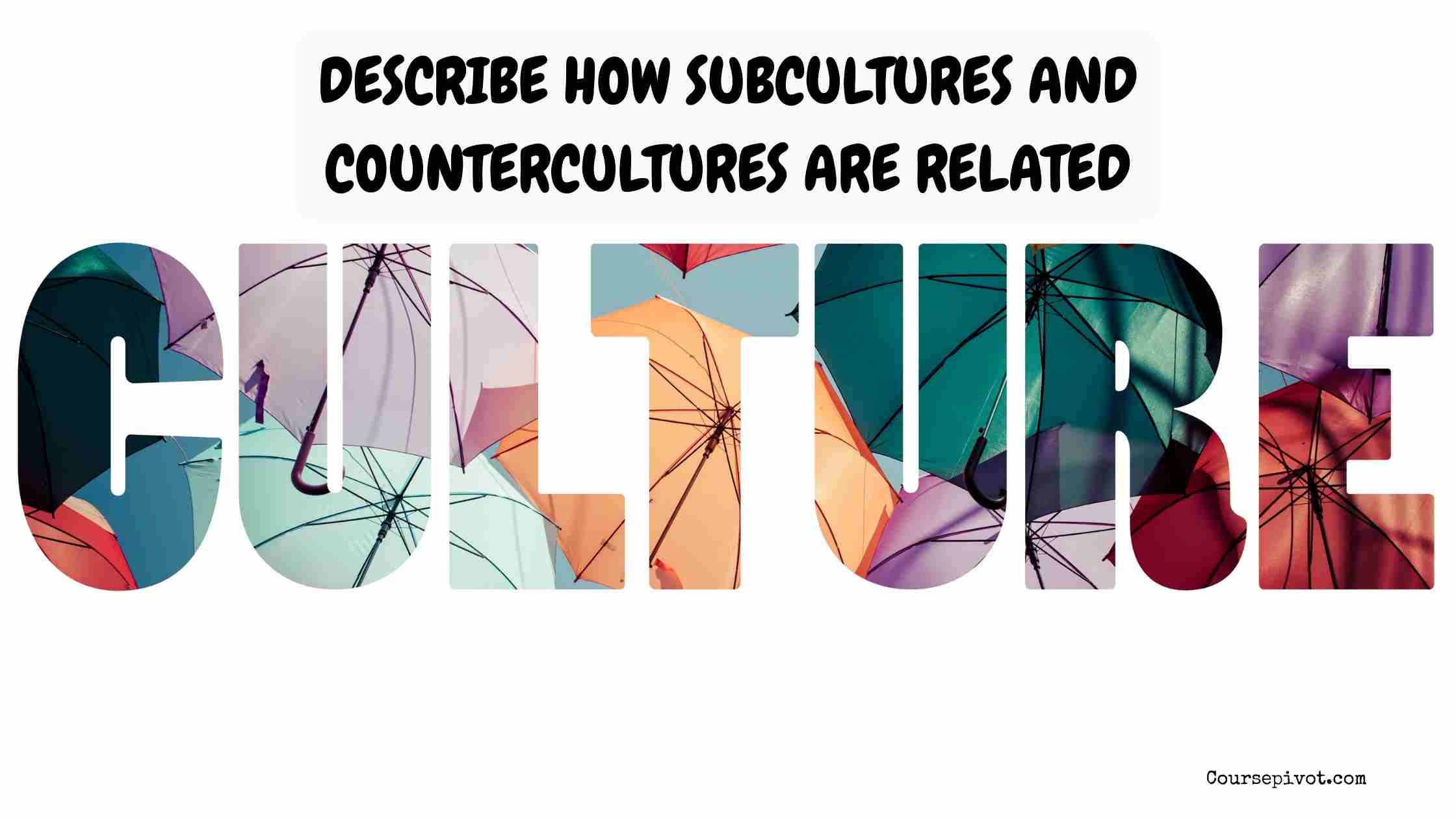
How Subcultures and Countercultures Are Related
Understanding how subcultures and countercultures are related is key to grasping how societies evolve, diversify, and challenge norms. These two concepts often overlap, influence one another, and sometimes even blur the lines between conformity and rebellion.
Table of Contents
But what makes them connected?
How do they coexist in a society that thrives on both order and change?
Let’s dive in to explore their relationship with clarity, depth, and relevance.
What Are Subcultures?
Before drawing connections, we need to understand what a subculture is.
A subculture is a smaller cultural group within a larger society that has its own distinct beliefs, values, styles, or interests. While subcultures may differ from mainstream culture, they don’t necessarily oppose it.
Examples of subcultures include:
- Goths
- Skaters
- Anime fans
- Hippies (initially)
- Gaming communities
- Motorcycle clubs
Each subculture offers a unique identity and sense of belonging, often built around shared hobbies, fashion, music, or ideologies. But they generally operate within the framework of the dominant culture, not directly against it.
What Are Countercultures?
In contrast, countercultures challenge or reject the mainstream values, often with the intention of creating a radically different system or worldview.
Some well-known countercultures include:
- The 1960s anti-war movement
- The Beat Generation
- Punk Rockers
- Radical environmental activists
- Certain anarchist groups
What makes a counterculture stand out is its opposition to what is considered “normal” or “acceptable” in society. These groups don’t just want to be different—they often want to change or overthrow the dominant culture.
Read our blog on The Benefits to Using Tissue Cultures to Study Medications Used for Treating Cancer Cells
How Subcultures and Countercultures Are Related
Although different in intent, subcultures and countercultures are closely related. In fact, in many cases, one can grow from the other.
🟢 1. Shared Foundation of Distinction
Both subcultures and countercultures set themselves apart from the dominant culture. They rely on shared styles, language, rituals, and beliefs to define their group identity.
They are both reactions to mainstream norms—but the degree of reaction varies.
🟢 2. Subcultures Can Evolve Into Countercultures
Some subcultures start as harmless interest groups but evolve into countercultural movements when their values begin to oppose societal norms.
For example:
- The hippie movement started as a subculture focused on peace, love, and psychedelic experiences. Over time, it became a countercultural force against war, capitalism, and social conformity.
🟢 3. Countercultures Often Influence Subcultures
Many modern subcultures are inspired by past countercultures. For instance:
- Punk music fans today form a subculture, but the punk counterculture of the 1970s was rooted in rebellion and anti-establishment ideals.
- What was once radical becomes normalized, giving birth to new subcultures that carry the aesthetics or ideas of a countercultural past.
🟢 4. Both Rely on Group Identity
Whether challenging or coexisting with the mainstream, both use:
- Fashion
- Music
- Language
- Symbols
…to express their identity and connect members. These shared cultural signifiers create strong in-group loyalty.
Subcultures and Countercultures: A Table Summary
| Feature | Subcultures | Countercultures |
|---|---|---|
| Relationship to Mainstream | Coexist with mainstream culture | Oppose and challenge mainstream culture |
| Examples | Gamers, Goths, Skateboarders | Hippies (1960s), Punks, Anti-war movements |
| Goal | Identity and belonging | Social or cultural change |
| Evolution | May remain stable or become countercultural | May later influence subcultures |
| Risk Factor | Generally accepted or tolerated | Often face resistance or backlash |
Why This Relationship Matters
Why does it matter how subcultures and countercultures are related?
Because understanding these cultural layers helps us make sense of how change happens in society. It reveals how youth movements emerge, how trends shift, and how ideas once considered rebellious can become mainstream values.
If you’ve ever worn clothes to stand out, listened to music not played on the radio, or believed in a cause the majority rejected—you’ve brushed up against subcultural or countercultural currents.
The Dynamic Between Subcultures and Countercultures
To describe how subcultures and countercultures are related is to recognize the continuum of cultural expression.
They are not isolated forces—they are deeply interconnected, often fueling each other’s evolution.
- Subcultures provide a safe space for alternative identity.
- Countercultures push for radical societal change.
- One may lead to or inspire the other.
In many ways, society needs both.
Subcultures offer diversity.
Countercultures spark progress.
Together, they remind us that culture is not static. It’s fluid, shaped by challenge and choice, and always in motion.
So next time you see a niche group forming around a hobby, idea, or look—ask yourself:
Are they just expressing themselves… or preparing to shake the world?
Cite this article
You can copy and paste your preferred citation format below.
Martin, L. & Arquette, E.. (2025, May 26). How Subcultures and Countercultures Are Related. Coursepivot.com. https://coursepivot.com/blog/describe-how-subcultures-and-countercultures-are-related/



